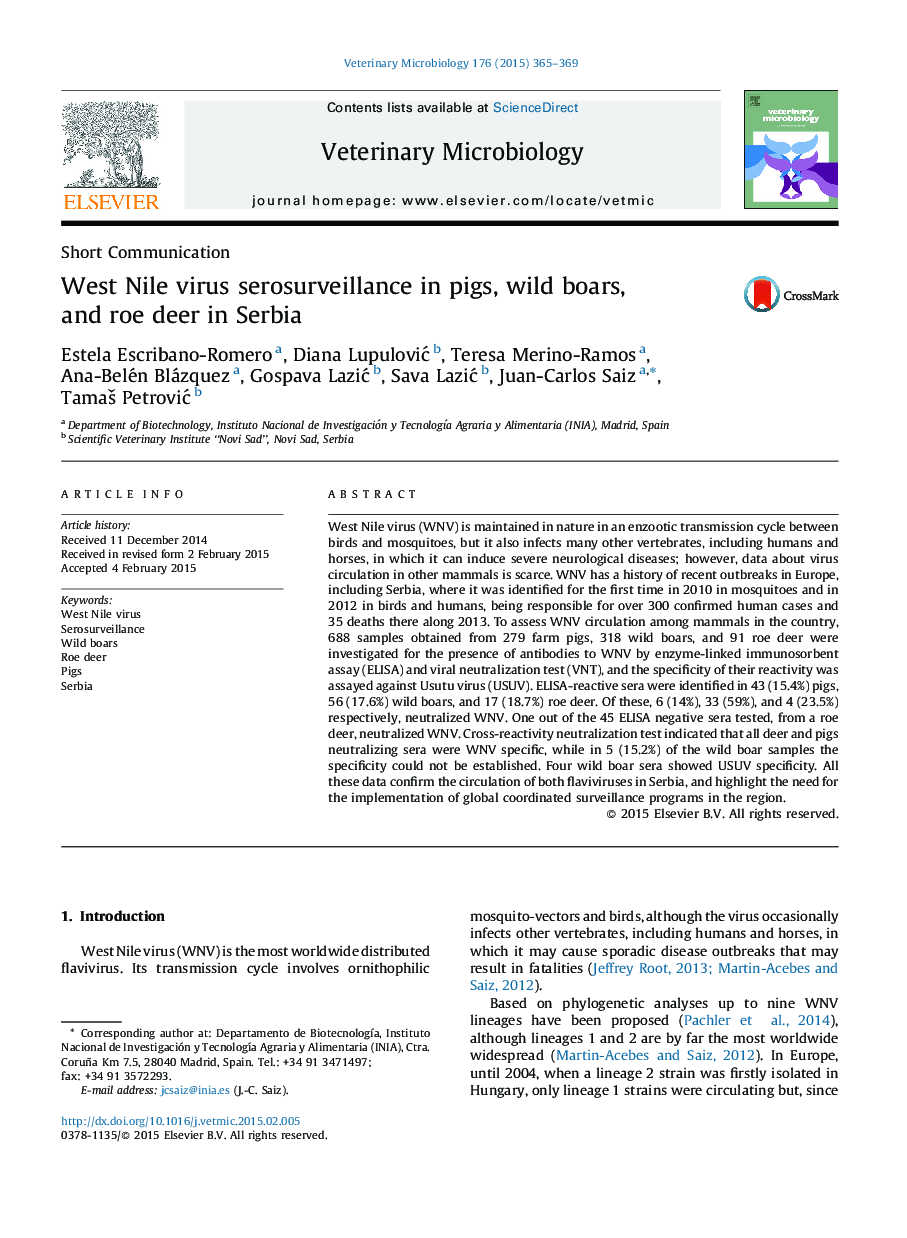| کد مقاله | کد نشریه | سال انتشار | مقاله انگلیسی | نسخه تمام متن |
|---|---|---|---|---|
| 5800010 | 1555352 | 2015 | 5 صفحه PDF | دانلود رایگان |

- WNV seroprevalence among pigs, wild boars, and roe deer from Serbia was analyzed by ELISA and VNT.
- WNV was detected in all three mammal species tested (pigs, wild boars, and roe deer).
- Detection of WNV and USUV specific sera confirmed circulation of both viruses.
- Transnational surveillance programs should be implemented in the region.
West Nile virus (WNV) is maintained in nature in an enzootic transmission cycle between birds and mosquitoes, but it also infects many other vertebrates, including humans and horses, in which it can induce severe neurological diseases; however, data about virus circulation in other mammals is scarce. WNV has a history of recent outbreaks in Europe, including Serbia, where it was identified for the first time in 2010 in mosquitoes and in 2012 in birds and humans, being responsible for over 300 confirmed human cases and 35 deaths there along 2013. To assess WNV circulation among mammals in the country, 688 samples obtained from 279 farm pigs, 318 wild boars, and 91 roe deer were investigated for the presence of antibodies to WNV by enzyme-linked immunosorbent assay (ELISA) and viral neutralization test (VNT), and the specificity of their reactivity was assayed against Usutu virus (USUV). ELISA-reactive sera were identified in 43 (15.4%) pigs, 56 (17.6%) wild boars, and 17 (18.7%) roe deer. Of these, 6 (14%), 33 (59%), and 4 (23.5%) respectively, neutralized WNV. One out of the 45 ELISA negative sera tested, from a roe deer, neutralized WNV. Cross-reactivity neutralization test indicated that all deer and pigs neutralizing sera were WNV specific, while in 5 (15.2%) of the wild boar samples the specificity could not be established. Four wild boar sera showed USUV specificity. All these data confirm the circulation of both flaviviruses in Serbia, and highlight the need for the implementation of global coordinated surveillance programs in the region.
Journal: Veterinary Microbiology - Volume 176, Issues 3â4, 17 April 2015, Pages 365-369